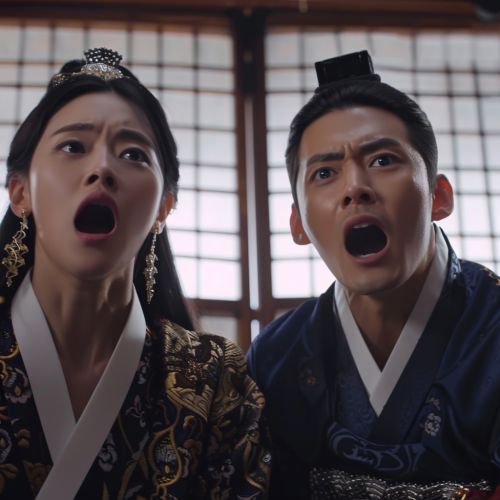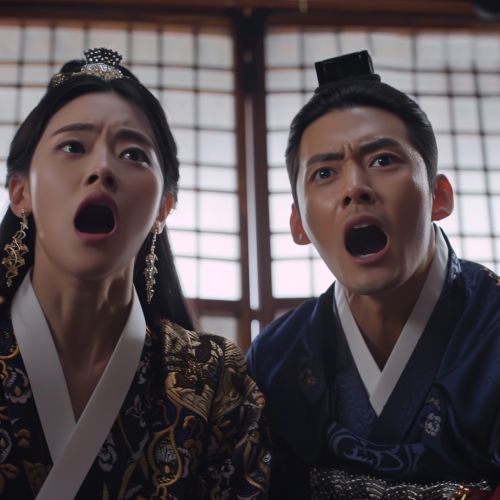K-dramas
Introduction
K-dramas, short for Korean dramas, are television series originating from South Korea. These dramas have gained immense popularity not only in their home country but also internationally. They are known for their unique storytelling, high production values, and the ability to blend various genres seamlessly. This article delves into the intricate world of K-dramas, exploring their history, genres, production processes, cultural impact, and more.
History of K-dramas
K-dramas have a rich history that dates back to the early days of television in South Korea. The first Korean television drama, "The Gate of Heaven," aired in 1962. Initially, these dramas were heavily influenced by Japanese and American television but soon developed their own distinct style.
Early Years (1960s-1980s)
In the 1960s and 1970s, K-dramas were primarily broadcast in black and white and focused on melodramatic themes. The 1980s saw the introduction of color television, which significantly enhanced the visual appeal of these dramas. During this period, historical dramas, known as Sageuk, became particularly popular.
Modern Era (1990s-Present)
The 1990s marked a turning point for K-dramas with the advent of the Korean Wave, or Hallyu, which refers to the global popularity of South Korean culture. Dramas like "Winter Sonata" and "Autumn in My Heart" gained international acclaim, particularly in Japan and China. The 2000s and 2010s saw the diversification of genres and the incorporation of modern themes, making K-dramas a global phenomenon.
Genres and Themes
K-dramas encompass a wide range of genres, each with its own unique characteristics. Some of the most popular genres include:
Melodrama
Melodramas are characterized by their emotional intensity and often tragic storylines. They focus on the complexities of human relationships and frequently involve themes of love, betrayal, and sacrifice.
Romantic Comedy
Romantic comedies, or rom-coms, blend humor with romance. These dramas are light-hearted and often feature quirky characters and humorous situations. They are immensely popular among younger audiences.
Historical Drama (Sageuk)
Sageuk refers to historical dramas set in Korea's past, often during the Joseon Dynasty. These dramas are known for their elaborate costumes, intricate plots, and historical accuracy.
Thriller and Mystery
Thriller and mystery dramas keep viewers on the edge of their seats with suspenseful and often dark storylines. They frequently involve crime, investigations, and psychological elements.
Fantasy and Sci-Fi
Fantasy and sci-fi dramas incorporate supernatural elements, time travel, and futuristic settings. These genres allow for creative storytelling and imaginative plots.
Production Process
The production of K-dramas involves several stages, from scriptwriting to post-production. The process is meticulous and requires collaboration among various professionals.
Scriptwriting
The scriptwriting process is crucial as it lays the foundation for the drama. Writers often spend months developing the storyline, characters, and dialogues. Some dramas are based on Webtoons or novels, while others are original creations.
Casting
Casting is a significant aspect of K-dramas. Producers and directors select actors based on their suitability for the roles. The casting process can be highly competitive, with many aspiring actors vying for a chance to star in a drama.
Filming
Filming typically takes place over several months. Unlike Western television series, K-dramas are often filmed in real-time, with episodes being shot and aired simultaneously. This allows for adjustments based on viewer feedback but also adds pressure on the cast and crew.
Post-Production
Post-production involves editing, adding special effects, and sound design. This stage is essential for ensuring the final product is polished and visually appealing.
Cultural Impact
K-dramas have had a profound cultural impact both domestically and internationally. They have played a significant role in promoting Korean culture and language worldwide.
Influence on Fashion and Beauty
K-dramas often set trends in fashion and beauty. Viewers are influenced by the styles and products used by their favorite characters. This has led to increased demand for Korean cosmetics and fashion brands globally.
Tourism
Many K-drama fans visit South Korea to see the filming locations of their favorite dramas. This has boosted tourism and contributed to the country's economy. Popular sites include Nami Island, where "Winter Sonata" was filmed, and the Bukchon Hanok Village, featured in several historical dramas.
Language Learning
K-dramas have also sparked interest in learning the Korean language. Many international fans study Korean to better understand the dialogues and cultural nuances in the dramas.
Global Popularity
The global popularity of K-dramas can be attributed to several factors, including their accessibility through streaming platforms and their universal themes.
Streaming Platforms
Platforms like Netflix, Viki, and Kocowa have made K-dramas easily accessible to international audiences. These platforms offer subtitles in multiple languages, allowing viewers from different countries to enjoy the content.
Universal Themes
K-dramas often explore universal themes such as love, family, and personal growth. These themes resonate with viewers worldwide, transcending cultural and linguistic barriers.
Challenges and Criticisms
Despite their popularity, K-dramas face several challenges and criticisms.
Stereotypes and Tropes
K-dramas are sometimes criticized for relying on stereotypes and repetitive tropes. Common tropes include the "rich boy, poor girl" dynamic and the "amnesia" plot device. Critics argue that these elements can make the storylines predictable.
Work Conditions
The intense production schedules of K-dramas can lead to grueling work conditions for the cast and crew. There have been instances of actors and staff suffering from exhaustion due to long hours and tight deadlines.
Representation
There is ongoing debate about the representation of different social groups in K-dramas. Critics argue that there is a lack of diversity and that certain groups, such as LGBTQ+ individuals, are underrepresented or misrepresented.
Future of K-dramas
The future of K-dramas looks promising, with continuous innovation and expansion into new markets.
Technological Advancements
Advancements in technology, such as virtual reality and augmented reality, are expected to influence the production and viewing experience of K-dramas. These technologies could offer more immersive and interactive content.
Global Collaborations
There is a growing trend of global collaborations in the production of K-dramas. Co-productions with international studios and the inclusion of foreign actors are becoming more common, broadening the appeal of K-dramas.
Diverse Storytelling
Future K-dramas are likely to explore more diverse and inclusive storylines. There is a push for greater representation of different social groups and more complex characters.
Conclusion
K-dramas have evolved from simple melodramas to a global cultural phenomenon. Their unique blend of genres, high production values, and universal themes have captivated audiences worldwide. As they continue to innovate and expand, K-dramas are set to remain a significant force in the entertainment industry.


